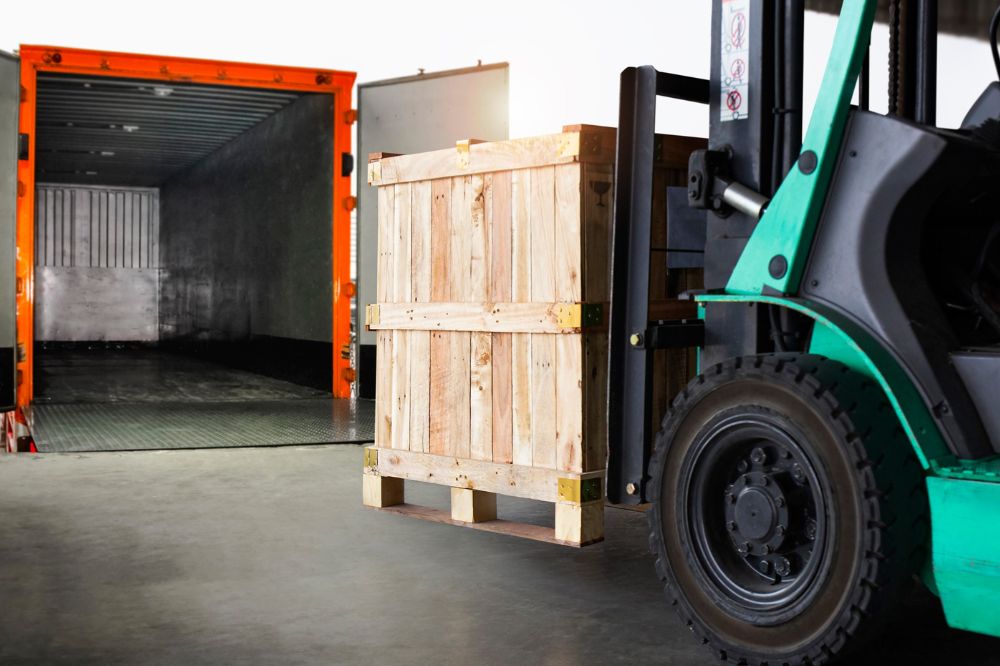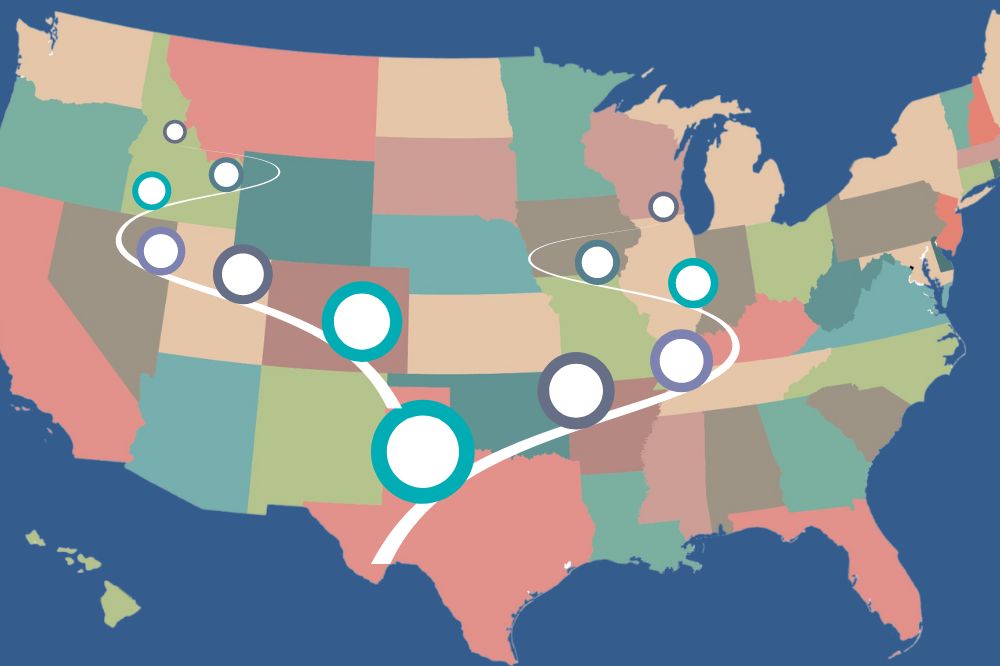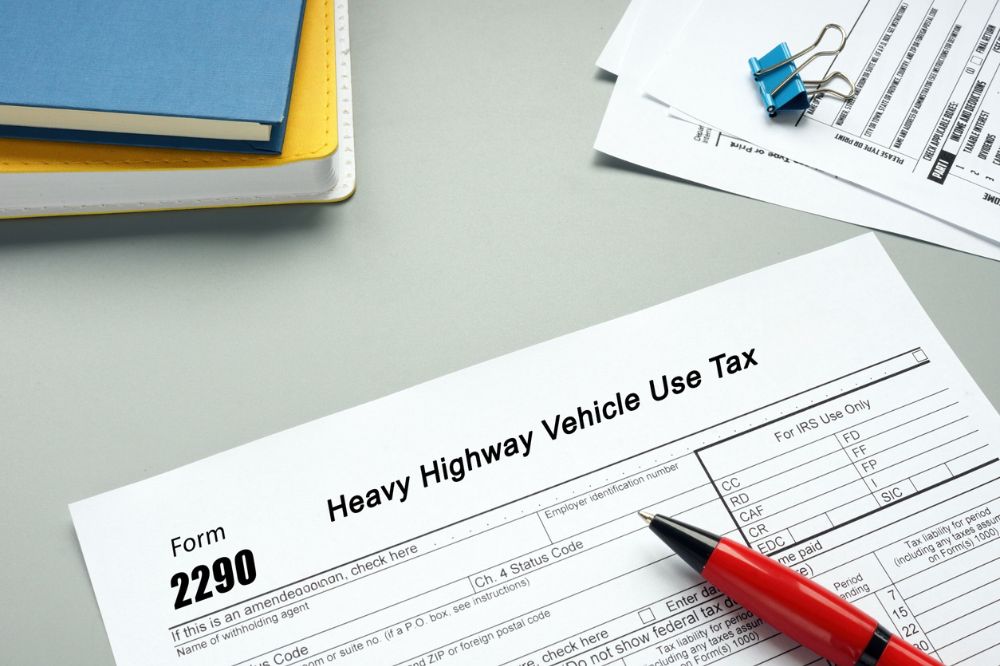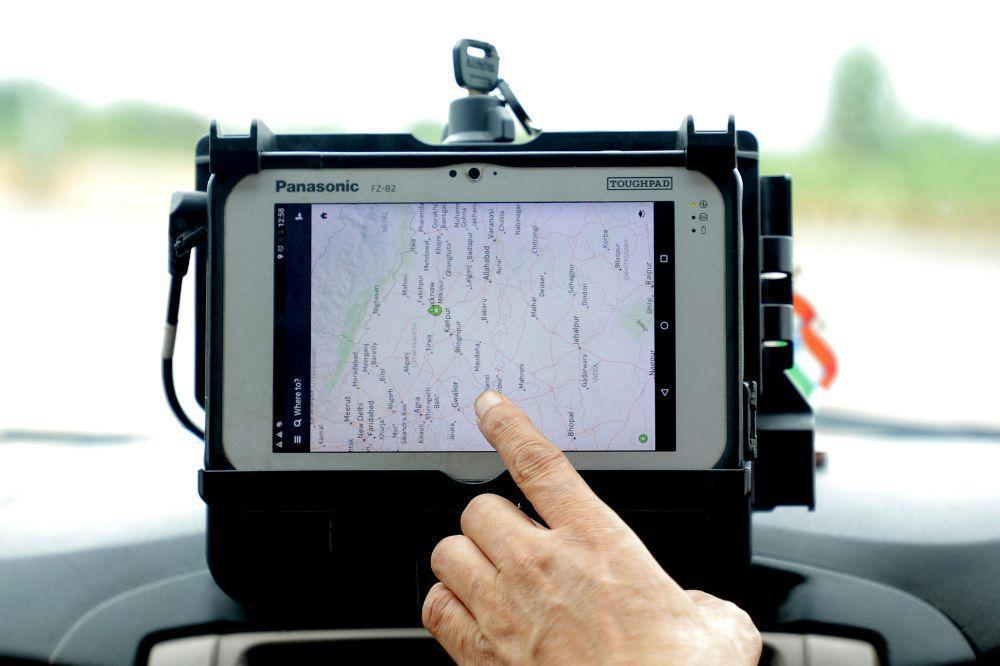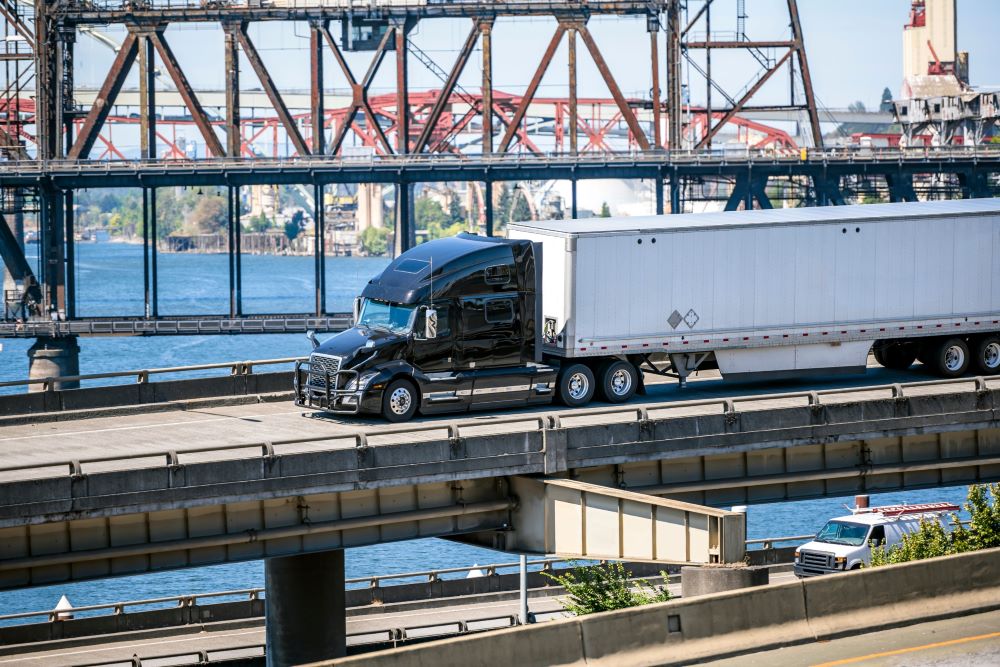
Conducting pre-trip inspections is essential for your safety as a truck driver and the safety of all road users. That’s why the Federal Motor Carrier Safety Administration (FMCSA) provides pre-trip inspection checklist standards all commercial driver’s license (CDL) holders must adhere to before hitting the road.
Usually, meeting FMCSA’s pre-trip inspection standards involves a few steps and might take approximately 10 -15 minutes minimum. If you’re wondering what a pre-trip inspection checklist is and why it’s important, read on to learn more.
What is a Pre-Trip Inspection Checklist?
The Department of Transportation (DOT) pre-trip checklist is an essential tool for Class A and Class B commercial driver’s license (CDL) holders to review before operating their vehicles. It is a guide to help you inspect various parts of your commercial vehicle and ensure it’s in proper working order before heading out.
The specific items on a pre-trip checklist can vary depending on the type of commercial vehicle and its intended use. For commercial trucks, the checklist covers nearly all components, accessories, and systems, including the truck, trailer, and cargo.
For Class A CDL holders, the checklist focuses on towing systems, such as the trailer parking brake and coupling areas, and typically extends to the trailer, flatbed, or other towed items. In contrast, the Class B CDL checklist emphasizes systems and parts for non-towing commercial vehicles.
Both Class A and Class B checklists share common items, including checks for brake lights, oil levels, front and rear suspension, and minimum brake pad thickness, among others.

Importance of a Pre-Trip Checklist?
A thorough inspection checklist streamlines the pre-trip process, ensuring careful and consistent vehicle assessments without missing details. It also simplifies completing required inspection reports, which is crucial for several reasons:
- Safety–well-performed pre-trip inspections help you identify potential mechanical issues early. Detecting and resolving mechanical problems in time ensures your truck is safe to drive. It also minimizes delays from unexpected vehicle breakdowns.
- Compliance–FMCSA provides specific vehicle inspection regulations commercial drivers must follow to ensure their vehicles are in peak condition for maximum road safety. Failing to comply with these regulations or performing incomplete pre-trip inspections might lead to penalties and affect your Compliance, Safety, and Accountability (CSA) score.
Low CSA scores can increase insurance premiums, leading to high operating costs.
- Maintenance– routine pre-trip inspections ensure proper vehicle maintenance. You’ll prolong the vehicle’s lifespan and avoid costly repairs later.
- Company reputation–proper adherence to all federal inspection regulations demonstrates your commitment to safety and professionalism. It leaves a positive impression on customers and other industry stakeholders, boosting your company’s reputation.
What to Include on a Pre-Trip Inspection Checklist
Commercial trucking companies may prepare their own pre-trip inspection checklist, adding their expectations and twists to the pre-trip inspection procedure. However, all processes must follow the federal pre-trip inspection checklist criteria.
A standard legal pre-trip inspection procedure should include the following steps and elements.
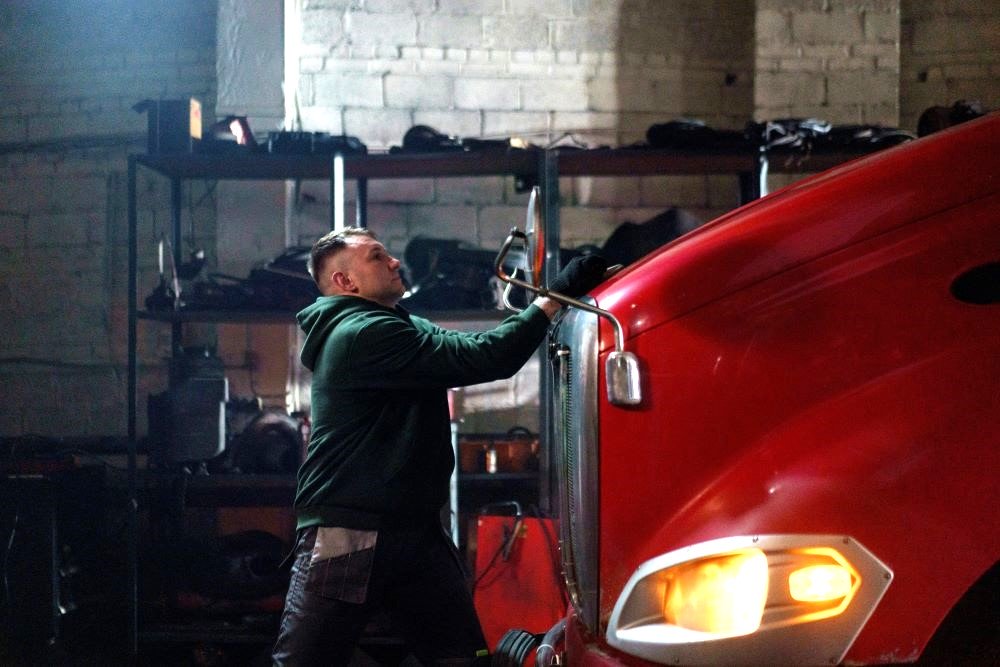
Step 1: Examine The Engine Compartment
Examining the engine compartment involves assessing the condition of various components. These include:
- Fluids–Check the oil and power steering fluid levels using a dipstick to ensure all fluids, including oil and coolant, are at the proper levels. Inspect hoses and reservoirs for leaks, and look beneath the truck for any fluid stains, which could indicate leaks of fuel, oil, coolant, or brake fluid.
- Belts–thoroughly inspect all belts for pumps, alternators, and compressors to ensure they have no cracks or frays. Also, confirm they’re in place, giving no more than half an inch of play.
Other components to pay close attention to and ensure they’re securely mounted and in excellent condition inside the engine compartment include:
- Air compressor
- Radiator
- Alternator
- All pumps, including the water pump and power steering pumps
- Wiring
Step 2: Inspect the Front Parts of Your Commercial Vehicle
Front-of-vehicle inspection checklist items often include checking parts of your steering equipment, such as:
- Steering box–check the steering box to ensure it is intact. All connected hoses must be properly mounted without any power steering fluid leaks.
- Steering column or steering shaft–this should be straight.
- Drag link–check whether the rubber is well-greased and uncracked.
- Tie rod plus control arms–both must be straight.
- Pitman arm–confirm if all the caste nuts and cotter pins are present and secure
Step 3: Check The Front Suspension Systems
This includes examining the following parts:
- Spring mounts and hangers–ensure the spring mounts hold all spring hangers securely in position. Look for signs of cracks, wear, or breakage that might compromise their performance.
- Shock absorbers–check for splits, leaks, or dry rot within the rubber. Focus more on the sections where the top and bottom parts overlap because most leaks occur here.
- U-bolts–confirm if all bolts are secure and tightened around the springs and axle.
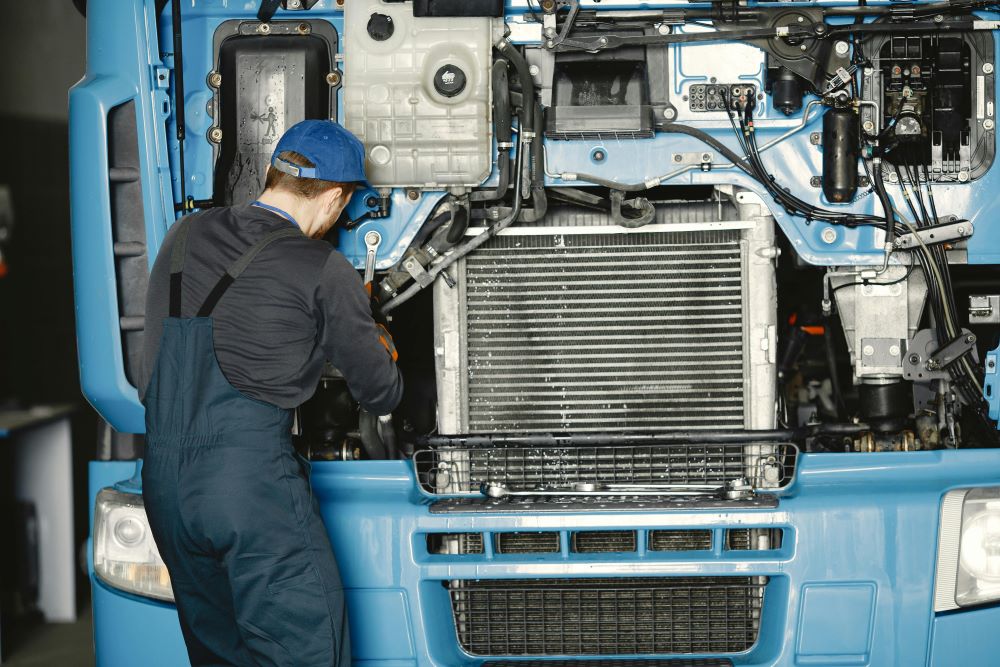
Step 4: Inspect the Brake System
Your commercial vehicle’s brake system is one of its most essential parts. Take your time to examine the entire brake system and perform several brake tests as outlined below:
- Brake linings and pads–the brake pad’s minimum thickness should be a quarter of an inch. Also, examine the linings for any debris.
- Air brake hose–ensure the line is properly connected and has no cuts or splits. You also want to confirm there is no air leak from the hose.
- Brake chamber–the brake chamber must be sealed completely. There shouldn’t be any audible air leaks.
- Brake drum–look at the color of the brake drum. If blue, it indicates excessive heat and might need further scrutiny.
- Hand brake–your system’s push rod should have an inch of play (not more) on either side and stand at 90 degrees when pulled.
You may need to perform a 9-, 7-, or 5-step brake test to inspect all brake components accurately.
Step 5: Examine the Lights and Reflectors
Inspect your lights and reflectors to ensure they’re all in perfect working condition and are clear of debris. The pre-trip inspection checklist items you’ll have to go through here include:
- High and low beams
- Brake lights
- Turn signals
- 4-way emergency flasher function
- License plate lights and running lights
- Reflector and DOT tape–ensure these are clean
Step 6: Inspect the Mirrors and Windshield
For this step, be keen to check the following:
- External mirrors plus mirror brackets–confirm if all external mirrors are clean and do not have any cracks or obstructions. They should also be attached to their mirror brackets firmly and well-adjusted to provide a proper rear view.
- Windshield–there shouldn’t be any cracks more than one inch. Also, run your windshield wipers to ensure they work and check that you have adequate windshield washer fluid.
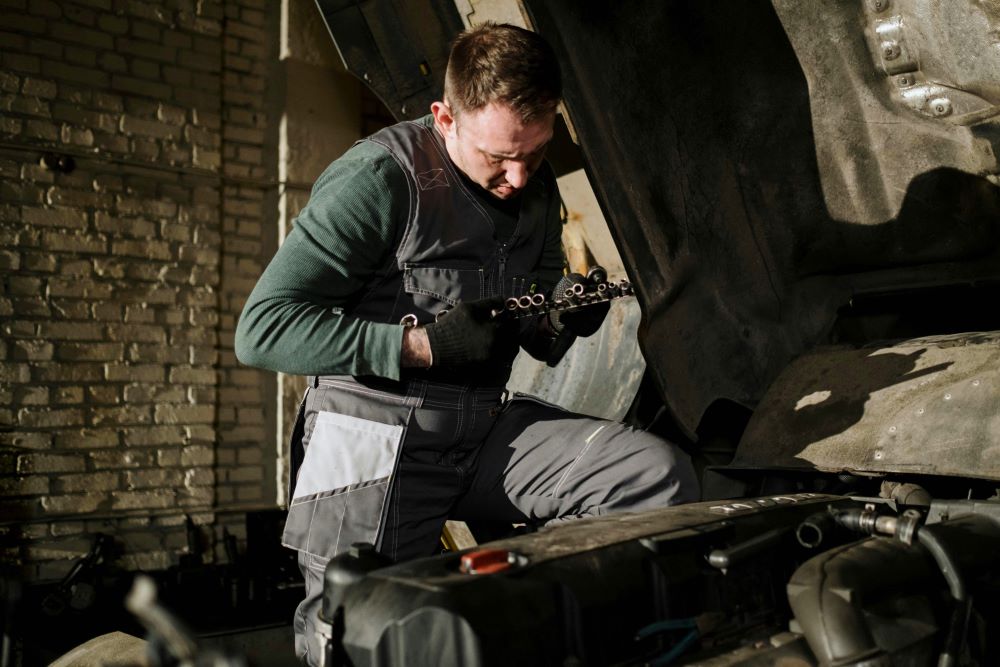
Step 7: Conduct A Battery and Trailer Coupling System Check
This step involves inspecting the fuel tank, battery area, and trailer coupling system.
Ensure the battery is properly charged and that all key components, such as the exhaust system, suspension, electrical connections, and coupling mechanisms, are secure, undamaged, and free of leaks. Check that everything is in good working order before continuing.
Step 8: Check the Wheels and Tires
To perform wheel and tire inspections properly, check the inflation levels and examine the overall tire condition, particularly tread depth. Some of the most important sections you must pay attention to closely are:
- Driver and steer tires–ensure the tire tread is even, and the minimum tread depth on drive tires is 2/32”, while that of steering axle tires is 4/32”. The treads and sidewalls shouldn’t have cracks, bulges, or abrasions.
- Axle seals and hub seal–the axle seal and hub seal should be intact with no leaks
- Wheel rims–there shouldn’t be any illegal welds or unauthorized repairs on the rims.
- Dual spacing–ensure there’s enough space between any dual tires
- Lug nuts and bolts–these components should be intact in their lug bolt holes.
- Valve stem–confirm there are no audible air leaks in the valve stem.
Step 9: Inspect the Trailer
Inspect the trailer to ensure all key components, such as the headboard, doors, and mud flaps, are structurally sound and securely mounted. Check for any signs of damage, such as cracks, holes, bends, or missing parts, and ensure everything is intact and functioning properly.
Step 10: In-cab Inspection
Ensure all in-cab components are undamaged and functioning properly. This includes checking the steering wheel, seat belts, pedals, gauges, horns, fuse box, parking brake, heater, and defroster to confirm they are all in working order.
Step 11: Inspect the Rear of the Vehicle
Before connecting your truck to the trailer, inspect the rear end to ensure the brake chambers are undamaged, shocks and airbags are intact, and the driveshaft is clean, with no debris in the U-joints. Verify that the frame is sturdy, the fifth wheel is well-greased, and the fuel tanks are free of leaks.
Step 12: Check the Emergency Kit
Truck drivers must carry an emergency kit as required by DOT regulations, including a fire extinguisher, warning devices, and spare fuses. During your pre-trip inspection, confirm the kit is complete and functional, including items like warning flags, reflective triangles, a safety vest, first-aid kit, jumper cables, a flashlight, strobe lights, and extra batteries.
How often should I perform a pre-trip inspection?
According to FMCSA’s current regulations, all truck drivers must perform and log in at least one thorough inspection in their hours of service daily. The pre-trip inspection should happen before each haul. You must also complete an inspection report if you find any defects during your inspection.
Final Thoughts
Thorough pre-trip inspections and regular truck maintenance significantly reduce road accidents and enhance safety. By following the provided checklists, you can ensure your pre-trip inspections meet legal requirements.
For additional safety tips and to further improve your practices as a commercial truck driver, visit our blog. If you find defects that need immediate repair during your inspections, reach out to us for financing options. We offer affordable commercial truck repair loans to help you keep your truck in excellent condition without disrupting your business’s cash flow.




